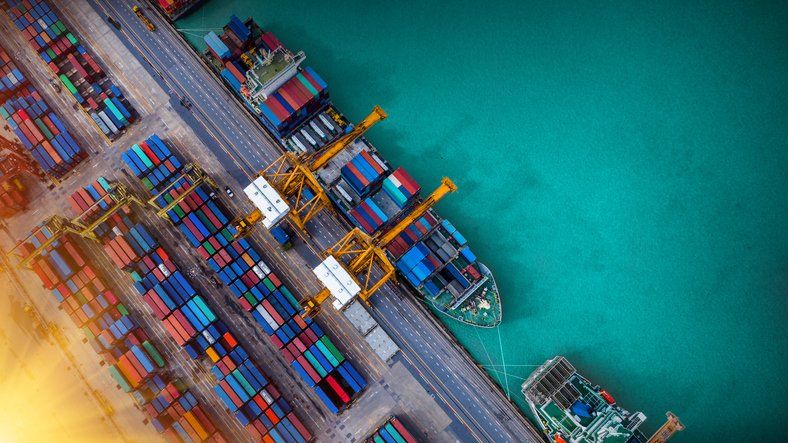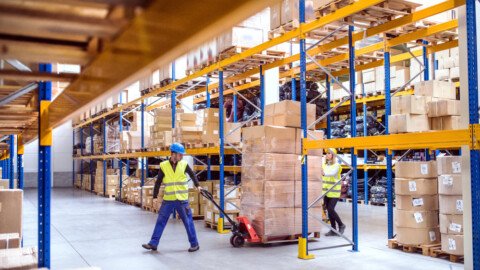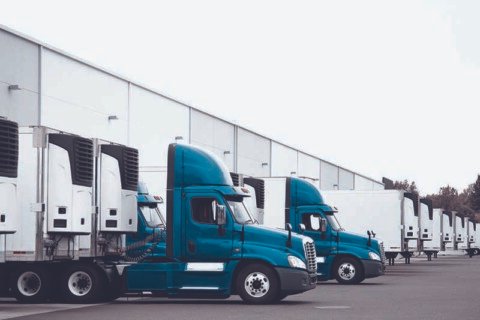The difficult-to-decarbonise maritime shipping sector is projected to account for an increasing portion of global CO2 emissions. Total shipping industry emissions grew by almost 10 per cent from 2012 to 2018, accounting for 2.89 per cent of total global anthropogenic emissions, according to the fourth IMO greenhouse gas study. Zero-carbon fuels and technologies are not available at the size, scale or price the industry needs for wide-scale adoption, but the sector’s stakeholders have recognised this and unanimously coming forward and exploring a range of zero-emissions fuels and technologies, including batteries, sustainable biofuels, green or blue hydrogen and their derivatives such as ammonia and methanol.
Upamanyu Borah
An uncharted road to Recovery
The shipping industry is recognised as a significant contributor to pollution and frequently comes under scrutiny for its contribution to worldwide greenhouse gas emissions.
While shipping was not directly included in the Paris climate change agreement the sector has been making efforts to clean up its act. Shipping plays a central role in global supply chains, meaning many industries will continue to use the shipping sector to facilitate their net zero goals.
According to the fourth International Maritime Organisation (IMO)—UN’s regulatory body on shipping—greenhouse gas study, the executive summary of which was published in end of February this year—the first to be released since the adoption of the IMO Strategy on Reduction of Greenhouse Gas (GHG) Emissions from Ships in 2018—suggests shipping’s share of emissions edged up over the period from around 2.76 per cent of the global total in 2012, as global trade grew and other sectors began to curb their emissions.
International shipping’s CO2 emissions also increased in the same time period, although at a slower rate than the industry overall, growing 5.6 per cent from 701 million metric tonnes to 740 million metric tonnes.
The study marks the first time the specific emissions share of international shipping has been calculated, using a new voyage-based allocation method that the IMO claims “is exactly consistent with the Intergovernmental Panel on Climate Change (IPCC) guidelines and definitions.”
The analysis also confirms that while total emissions have grown, the carbon intensity of shipping improved between 2008 and 2018—both for international shipping as a whole and for most ship types. Overall carbon intensity, as an average across international shipping, was between 21 and 29 percent lower in 2018 than in 2008, the figures show.
Most of this progress was made between 2008 and 2012, however, with progress on improving the carbon intensity of international shipping slowing markedly in recent years. Since 2015, average annual improvements have ranged from just 1 to 2 per cent, the analysis shows. The new study marks the first time that carbon intensity estimates have been included in the IMO’s reporting.
Shipping is responsible for over 3 per cent of global CO2 emissions, according to data from various maritime consultants and research agencies, and this is only expected to increase if it takes no action — and scientists have projected that maritime shipping could account for 17 per cent of total annual CO2 emissions by 2050.
Although the COVID-19 pandemic resulted in the emission levels for 2020 and 2021 being lower than predicted, they are expected to rise to pre-pandemic levels as the industry begins to resume operations.
As early as April this year, the global shipping industry is calling on the world’s governments to tax its carbon emissions. Groups that represent more than 90 per cent of the global fleet say the measure is needed to tackle climate change.
Not to question, regulation is a challenge. Because shipping is regulated internationally by the IMO, the politics of decarbonising shipping can be complicated by the fact that countries have varying degrees of interest in pushing for change.
Consequently, International Chamber of Shipping (ICS), the global trade association for ship operators has put forward a comprehensive proposal for a global levy on carbon emissions from ships, in what would be a first for any industrial sector.
ICS, which represents the world’s national shipowner associations and more than 80 per cent of the merchant fleet, presented a submission to the UN recently in September, calling for an internationally accepted market-based measure to accelerate the uptake and deployment of zero-carbon fuels.
According to papers handed to the IMO, the levy would be based on mandatory contributions by ships trading globally, exceeding 5,000 gross tonnage, for each tonne of CO2 emitted. The money would go into an ‘IMO Climate Fund’ which, as well as closing the price gap between zero-carbon and conventional fuels, would be used to deploy the bunkering infrastructure required in ports throughout the world to supply fuels such as hydrogen and ammonia, ensuring consistency in the industry’s green transition for both developed and developing economies.
The Fund would calculate the climate contributions to be made by ships, collect the contributions, and give evidence they have been made. ICS hopes that it would also support new bunkering infrastructure, so that new fuels, when developed, can be made available globally and from as many ports as possible.
To minimise any burden on UN Member States and ensure the rapid establishment of the carbon levy, the framework proposed by industry would utilise the mechanism already proposed by governments for a separate US$5 billion R&D Fund to accelerate the development of zero-carbon technologies, which the UN IMO is scheduled to approve at a critical meeting in November immediately following COP 26.
“What shipping needs is a truly global market-based measure like this that will reduce the price gap between zero-carbon fuels and conventional fuels,” Guy Platten, Secretary General of ICS was quoted stating
“The rapid development of such a mechanism is now a vital necessity if governments are to match actions with rhetoric and demonstrate continued leadership for the decarbonisation of shipping.”
“There’s no question that improvements in technology can enable the transition to zero-emission shipping. However, huge leaps must still be taken if we’re to achieve the readiness levels needed for deployment at scale. This includes building the necessary infrastructure to support such as transition.”
“We need to be able to put zero emission ships in the water by 2030 without challenging price and safety issues. If the IMO lends it’s backing to our proposal, then we may yet be able to change this and deploy technologies economically and equitably.”
ICS believes that a mandatory global levy based MBM is strongly preferable over any unilateral, regional application of MBMs to international shipping, such as that proposed by the European Commission which wishes to extend the EU Emissions Trading System to international shipping. A piecemeal approach to MBMs, (the EU ETS will only apply to about 7.5 per cent of global shipping emissions), will ultimately fail to reduce global emissions from international shipping to the extent required by the Paris Agreement, whilst significantly complicating the conduct of maritime trade.
The levy based MBM, which is co-sponsored by the trade association for bulk carrier operators, INTERCARGO, comes in addition to an industry and government proposed US$5bn R&D fund. The R&D fund, of a mandatory US$2 levy per tonne on marine fuel, would be used entirely to fund the research and development of alternative zero-carbon fuels and propulsion systems. ICS has called for this fund to be approved at an upcoming pivotal meeting of the IMO in November this year.
Platten said, “The World Bank and numerous studies have concluded that the most appropriate global MBM for reducing carbon emissions from shipping is a levy-based system.”
“Adopting our proposal for a levy-based system, will avoid the volatility that exists under emissions trading systems, such as the EU ETS—which in the case of shipping, seem to be more about generating revenue for governments from non-EU shipping, than helping shipping to decarbonise.”
“A levy based system can give the industry price certainty, and more stability for making investment decisions in zero–carbon ships and developing emissions saving technology.”
Winds of Change heralding a new chapter
There is change on the horizon, as regulators, industry groups and financial institutions take steps to steer the shipping sector toward decarbonisation.
While there are signs of progress, the shipping sector faces some unique challenges. Zero-carbon fuels and technologies are not available at the size, scale or price the industry needs for wide-scale adoption, according to the ICS. To create a zero-emissions shipping fleet, “new fuels will need to be developed along with novel propulsion systems, upgraded vessels and an entirely new global refueling network,” the group had previously said in a report.
Today, the sector is exploring a range of zero-emissions fuels and technologies, including batteries, sustainable biofuels, green or blue hydrogen and their derivatives such as ammonia and methanol. Blue hydrogen is produced from natural gas by splitting its molecules into hydrogen and carbon dioxide and capturing and storing the CO2. Green hydrogen is produced by splitting water through electrolysis and powering the process using renewable electricity sources such as wind and solar.
A number of shipping companies at the same time are starting to set their own decarbonisation goals that go beyond the IMO’s target. One of the largest shipping companies in the world, AP Møller – Mærsk aims to achieve net zero carbon emissions by 2050 and has an interim target of a 60 per cent reduction by 2030.
Maersk announced it will roll out the first carbon-neutral vessel in a groundbreaking series of 8 large ocean-going container vessels in the first quarter of 2024 and has also pledged to launch its first zero-carbon emissions vessel by 2030.
The vessels will be built by Hyundai Heavy Industries (HHI) and have a nominal capacity of approximately 16,000 TEU containers.
The agreement with HHI includes an option for 4 additional vessels in 2025. The series will replace older vessels, generating annual CO2 emissions savings of around 1 million tonnes.
Additional CAPEX for the dual fuel engine capability, which the vessels boast would enable operation on methanol as well as conventional low Sulphur fuel, will be in the range of 10-15% of the total price, enabling Maersk to take a significant leap forward in its commitment to scale carbon neutral solutions and lead the decarbonisation of container logistics.
Maersk said its intention was to operate the vessels on sustainable bio-methanol or carbon-neutral e-methanol “as soon as possible,” but noted that limited global supplies of the fuels would mean running the ships on low carbon fuels from day one would be a challenge, and for which Maersk continues to engage in partnerships and collaborations with relevant players.
In line with its wider strategy to commit funds toward developing energy that doesn’t contaminate, AP Moller – Maersk has agreed to acquire a minority stake in a green-fuel startup WasteFuel, which is funded by Warren Buffett.
Maersk expects the investment to assist WasteFuel to build bio-refineries, with the first fuel expected to be set in 2024.
Morten Bo Christiansen, Vice President and Head of Decarbonisation, who is in charge of cutting CO2 emissions at the Copenhagen-based shipping firm said in an interview, “We need green fuels from all over the world and we need them in huge quantities. WasteFuel, which converts trash into green bio-methanol, sustainable aviation fuel, and renewable natural gas, is at the forefront in its field and we hope that one day we can make an off-take agreement with them.”
Christiansen noted, “It’s a chicken-and-egg problem. No one is making green methanol because there’s no demand to consume it, but there are no vessels to consume it because there is no methanol to buy. We are trying to break the situation by helping create a market.”
Christiansen also announced Maersk plans to purchase more green fuel startups in the time to come.
“We definitely expect to invest in more because so much needs to happen. We want to stimulate the market in all technologies and in all geographies.”
CMA CGM is also said to have invested in alternative fuels and launched a project to buy 12,000 tonnes of original bio-methane.
This amount of fuel would be enough to power two of its intra-Europe subsidiary containership’s 1,400 TEU LNG-powered vessels, deployed on a St Petersburg-Rotterdam Baltic Sea feeder loop, for an entire year.
The company said in a statement that, acquiring the fuel did not mean it would be running the ships purely on bio-methane from next month; rather that it paved the way for it do so in the future, as the fuel begins to enter the market.
Additonally, the CMA CGM Group, EveRé—operator of the multi-process household waste treatment plant commissioned by Métropole Aix-Marseille-Provence, Elengy—a subsidiary of Engie, operating liquefied natural gas (LNG) terminals at Fos-sur-Mer, and TotalEnergies—a global multi-energy company that produces and supplies energy, have joined forces to study the feasibility of creating France’s first production unit for liquefied biomethane (BioLNG), a low-carbon alternative fuel dedicated to energy transition in the shipping industry.
Produced by converting the biodegradable part of household waste from the Marseille Provence region, BioLNG would allow for the decarbonisation of shipping services departing from the Grand Port Maritime in Marseille and would be used primarily for the CMA CGM Group’s LNG-powered vessels.
“Currently, bio-methane production is scattered around Europe. The guarantee-of-origin system is very simple and designed so that small producers can produce bio-methane and obtain a certificate – that certificate is then sold and the producer can inject the bio-methane into the gas grid. It does not require a separate infrastructure. We have announced we are going to buy 12,000 tonnes of bio-methane on that basis, to send a clear message to our customers, partners and suppliers that this is one of the solutions that will help us reduce greenhouse gas emissions,” Farid Trad, Head of Energy/Financial Markets at CMA CGM, had said while speaking to the media.
Trad shared tentative plans to invest in bio-methane production were part of a strategy to create economies of scale for the fuel type, and similar to the process it has undergone with bringing LNG as a fuel to the market.
“We want to build trust in this as a fuel, because it will bring scale to the industry – the more bio-methane you get going into the grid, the greener the industry becomes.
“The first priority was to get the LNG fuel working – we needed to get the infrastructure in place to support it, and set up bunkering facilities in Rotterdam, Fos and Singapore. Now we have that global footprint with LNG in place, we can begin to think about doing similar with bio-methane. And that is why Europe is the easiest place to start as the grid is already in place,” he said.
The CMA CGM Group, TotalEnergies, and French-based utility company Engie are already working together for several months as part of the Coalition for the Energy of the Future, which aims to step up the pace of development of future energy sources and technologies and to support new sustainable mobility models, thereby reducing the environmental impact of transportation and logistics.
In order to make true technological revolutions possible and achieve tangible results by 2030, the Coalition has set three main targets:
- to considerably increase clean energy supply sources
- to reduce energy consumption per equivalent kilometer transported
- to reduce the proportion of emissions attributable to transportation and logistics
Meanwhile, world’s second ranking container carrier MSC has decided to invest in a well-established technology to boost efficiency for a raft of new conventionally-fueled ships. It has put in a record 30-unit order for Silverstream Technologies’ air lubrication system, which jets out a thick carpet of air bubbles under the bottom of the hull in order to reduce drag.
The technology will help reduce these vessels’ emissions at the margins, cutting lifetime carbon dioxide releases by about 5-10 percent. That translates into a reduction of as much as 1.6 million tonnes of CO2, saving MSC an estimated US$300 million on bunker costs over the lifetime of the vessel.
It is easily the largest order for an air lubrication system ever placed, according to Silverstream, and it is a vindication of the company’s years-long effort to gain commercial acceptance at scale. After its founding in 2010, Silverstream secured its first one-ship trial with Shell in 2014, followed by contracts for Norwegian Cruise Lines and Carnival Cruise Lines. More recently, it has even installed a system on a very large ore carrier (VLOC) for Brazilian mining giant Vale.
“This order of more than 30 Systems for MSC’s newbuild programme is a landmark moment for both Silverstream and for clean technology adoption across shipping. It is the single largest order of not only our technology, but of any air lubrication technology in the history of our market. We are extremely proud of this achievement and are ready for the challenge of managing our largest ever installation programme at five different shipyards,” Noah Silberschmidt, Founder & CEO, Silverstream Technologies expressed.
“Investing in a retrofitted and verified technology today, such as Air Lubrication Systems (ALS) which reduces frictional resistance between the hull and the water will enable owners and operators to remain profitable in an increasingly competitive and complex market,” Silberschmidt had previously stated in an interaction to the media.
“They help us to meet long term global decarbonisation targets and prove we are doing right by the world by investing in holistic vessel efficiency. Crucially, though, the efficacy of these technologies must be carefully scrutinised. Finding the right solution that stands up to rigourous testing will help the industry achieve the carbon savings required to meet incoming regulations.”
“Shipowners need to consider the entire process of retrofitting, associated costs and benefits. It is not just about choosing an available solution, but rather considering both the technical and operational benefits for a particular vessel. One solution which works for one vessel might not work for another, but making informed decisions early on will pay off,” he further added.
The MSC vessels applying the system are expected to be delivered from shipyards in Asia in 2022-2024.







